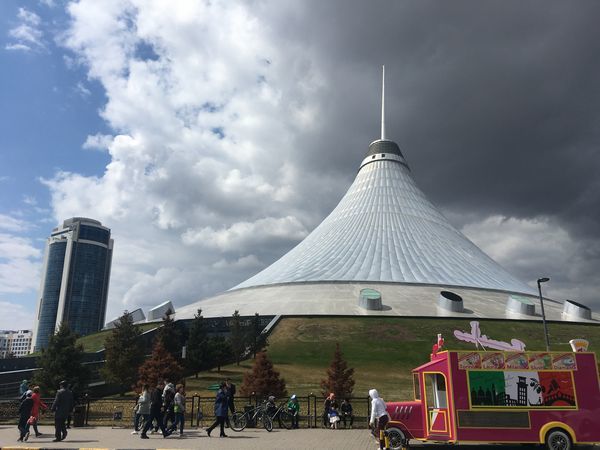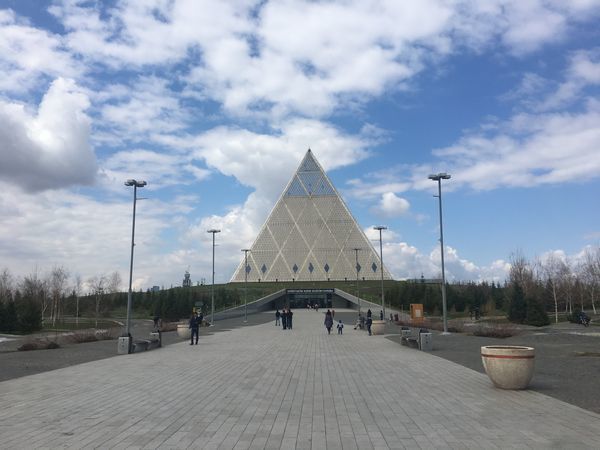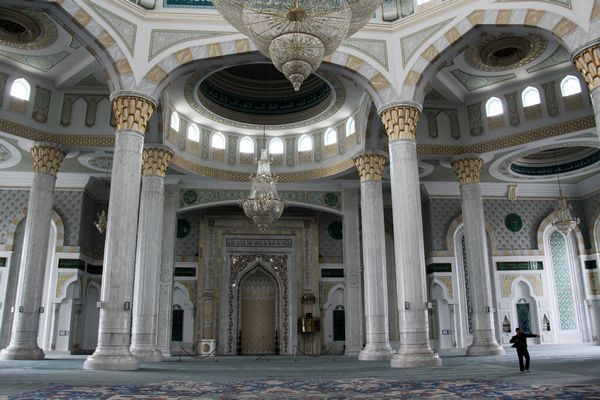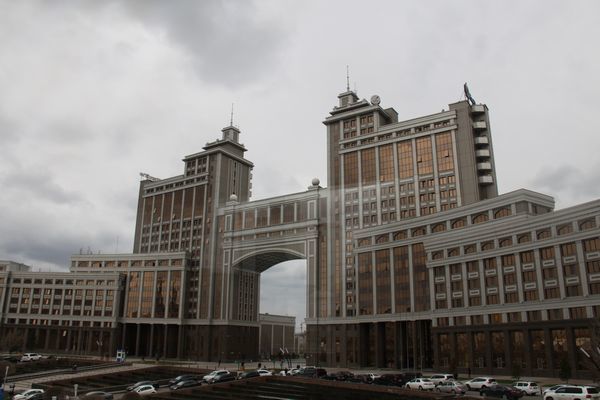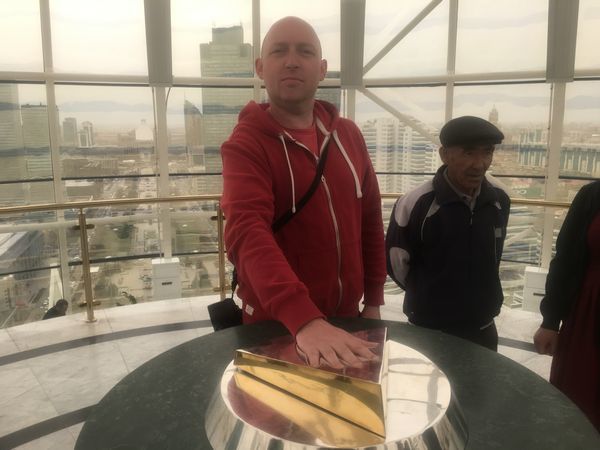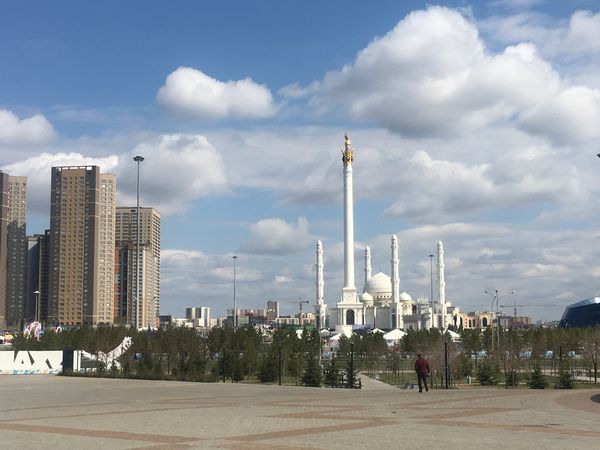Astana
Astana
Capital of Kazakhstan
Astana, Kazakhstan
Astana Weather
Astana Transport
Astana Sights
Astana Hotels
Astana is a curious place indeed. It is both famous and infamous for the degree to which it has expanded and become increasingly architecturally idiosyncratic over the past couple of decades since being named Capital of Kazakhstan in 1997 (a title previously held by Almaty).
While aesthetics are of course subjective, it is fair to say that while many areas of Astana are very impressive, ostentatious, and simply shiny & new, it is not as a whole a beautiful city.
It is quirky and unique though for sure, which is good enough for us!
Astana has been known by a number of names in its history: prior to the late 90s the city was named Akmola, then Tselinograd, then back to Akmola, and then the name of Astana (making 'Capital', so not a choice showing great imagination). More recently, in 2019, the name was changed to Nur-Sultan (the first name of the former President Nazarbayev). Then, in September 2022 Nazarbeyev's successor, President Tokayev, changed his mind (ostensibly at the urging of Parliament) and changed the name back to Astana - the name we find ourselves with now, for however long it may last!
First though, why did Astana become the capital?
Capital of Kazakhstan
Almaty (the former capital) is a famously lovely place.
Historical and pleasant with much to do and well-known to the world.
Wouldn’t any government want to be based there?
No official explanation seems to exist, but locals will gladly offer their own versions.
- It was to get away from Chinese influence.
- It was to get away from the earthquakes in Almaty that prevent the building of a lot of these giant structures in Astana today.
- It was to get away from entrenched power-bases of regional barons.
- It was to show to the people that the president is a man of the steppe, just as the ancestors of all Kazakhs are.
Anyway, who knows, but still it happened and here we are today in Astana, one of the world’s strangest cities!
Astana History
In the mid-19th Century, as Central Asia was being absorbed into the sphere of influence of the expansionist Russian Empire, the vanguard of this European power was the Cossacks.
They established a fort on the Ishim River in 1830 and named it Akmola, later Akmolinsk.
The reason for setting up a base here was simply geography. This spot is in the middle of everything and trade and supply line as well as the movement of a military variety can be controlled and observed from such a position.
The settlement grew over time but remained in the low thousands into the 20th Century.
Red October brought the Bolsheviks to power and the civil war that followed consolidated Soviet rule over the former empire, Akmolinsk remained a bit of a backwater. Though until the Great Patriotic War (WWII) when vast amounts of industrial and agricultural production were moved east to keep it out of the hands of the advancing Wehrmacht.
Of course, the population of Kazakhstan has swelled from the 1930s. Deportations of the various ethnic groups, including vast numbers of Volga Germans, but now this human tide was followed by a tide of material.
The population and economy swelled in the post-war years, bolstered again by the Virgin Lands Campaign initiated by Nikita Khrushchev to transform the barren steppe into a verdant wonderland thanks to the sweat and passion of the USSR’s youth. Akmolinsk was renamed Tselinograd and the process of turning a former Cossack fort into a proper Soviet city began in earnest, with rows of Khruschyovki (4 or 5-storey prefab apartment buildings, thrown up as easily as lego houses by experienced construction crews from the Baltics to the Pacific) as well as Soviet staples such as House of Culture, Palace of the Soviets, Schoolchildren’s Palace, etc.
Upon independence at the end of 1991, the new government under the control of former General Secretary (now President) Nazarbayev scrapped the name Tselinograd and went with Akmola again. Sign painters went to work, but in 1998 just after the city took the capital crown from Almaty, the name was changed to Astana.
Magnet and mug makers for the tourist trade again had to recalibrate when the name of Nur-Sultan was settled in 2019, and then once again (hope they didn't destroy the stockpiles of 'Astana' branded goodies) when the name changed back in 2022.
While it is easy to see Astana as an architectural playground, it is worth remembering that more than a million people do call this place home. Around two-thirds of them are Kazakhs, the rest are Russian, Ukrainian, and other ethnic groups.
A mix not as melting-potty as Almaty, but still notable on the streets.
The city is seen as a place with a future and attracts young people from across the country.
While Astana is a harsher place than Almaty, it is seen as being much more of a land of opportunity than the sleepier former capital.
One more note on the buildings here (and you will see them when you visit, so we will keep it short).
A valid criticism of Astana is that despite being centrally planned, it can also come across as very haphazard and unsubtle.
In some areas, there is basically one of every kind of building. A block that looks like one of the Moscow Seven Sisters, then a skyscraper with a Chinese-style temple on top of it, then a white marble Ashgabat-style monstrosity.
If you went to an art gallery and they put one of every kind of painting in the same room you would think it was something of an un-curated mess, see what we mean? Anyway, taken by themselves there are so many architectural marvels that it makes a visit to Astana worthwhile just for checking these structures out alone.
A street of massive restaurants built so that the building itself shows what kind of restaurant it is (it makes sense when you are there) makes you wonder what would happen if one went out of business, you couldn’t really open a daycare or insurance company in something that is immediately recognizable as a Georgian Restaurant after all.
Astana Weather
What is the weather like in Astana?
In winter it is hardcore.
Astana is the second coldest national capital in the world (after Ulan-Baatar).
Winters are long and dry, typical for the Kazakh steppe.
It stays cold from November to March, then heats up through spring and in summer can be pretty roasting with temperatures up in the 30s at times.
High winds are common in Astana too.
As a result of the inhospitable climate, buildings are constructed to keep people cool/warm as the seasons demand, and the scale of Astana means that in the least clement months people tend to drive everywhere rather than be out and about on foot.
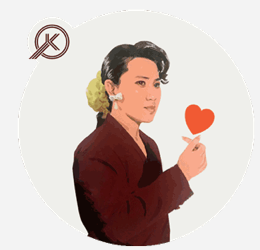
Astana Transport
How to get to and travel around Astana?
FLIGHT
For all of its ostentatious gigantism in the form of architecture the Nur-Sultan Nazarbayev International Airport (useful in pub quizzes for an ‘airports named after living people’ category perhaps?) is not unnecessarily massive. Nut-Sultan airport is far larger than the busier counterpart in Almaty, but still not on the scale of a Daxing or Istanbul.
It is located 17km from the centre of town, an easy and affordable run in a taxi.
Multiple international carriers call in here including Air Astana which uses this as its secondary base, after Almaty.
TRAIN
Astana has two main stations.
The central Astana Station is an old structure, well-located and small enough to get around easily.
The usual scenes of buses and taxis hanging around outside can be found and arrival here puts you straight into the action.
At the edge of town is the massive new Nurly Zhol station, built for the 2017 World Expo and from which most trains now depart.
As Astana is more or less bang in the middle of Kazakhstan and is the capital city, trains from here head off to everywhere. From major cities such as Almaty, Pavlodar, and Karaganda, and to smaller sites such as Kurchatov and beyond.
Security is tighter at Nurly Zhol Station than Astana Station. Be warned that you are not supposed to take alcohol onto the trains. If you pinky-promise that you will not open any bottles on the train then usually staff are understanding about this with tourists.
CAR
A modern highway system extends outwards from Astana, slightly degrading as it gets further away but still, all things considers, the Kazakh road network is not too bad at all if you are in a decent enough vehicle.
Driving times can be substantial. From here to Almaty is more than 1200km so a couple of days drive. To Pavlodar or Karaganda it is about 5 hours, and to Kurchatov a grueling 900km so a full day of driving. If you are visiting as a tourist then frankly you would be much better off taking the train to get from Astana to anywhere else. More relaxing if a little slower of a journey.
PUBLIC TRANSPORT
There is no metro in Astana, so all travel is above ground.
Unlike Almaty, Astana is not particularly suited to walking all around. It is on a much bigger and more spread out scale (space being not much of a constraint on the steppe).
So usually, if you are moving around here you will be in a motor vehicle at some time.
There are street taxis, and Yandex taxi app works well (download in advance and practice, there is an English version). As does Uber (Yandex is used more though) and there is a well-developed, cheap, and easy to understand bus network.
It should be not a huge problem to get from A to B for most travellers here.
Bus number 12 does a scenic route around the new part of the city, so if you’re looking for a cheap way to do quick loop then get on this vehicle.
Astana Sights
What to do in and around Astana?
National Museum of Kazakhstan
Opened only in 2014 (this is the New National Museum actually), this impressive structure still seems to be in the process of being filled with exhibits at the time of writing. So some areas can seem a little sparse. Still, it is free to enter and you can have a tour or just go at your own pace.
Most displays are in Kazakh, Russian, and English.
A massive animatronic eagle hangs from the atrium ceiling, flapping its wings laconically. It is a magnificent site and a great way to start a visit, well done New Museum!
There are rooms dedicated to the ethnographic history of Kazakhstan, arts of various eras, the development of Astana city (this part is especially impressive, with immersive displays showing how the place has developed), and much more.
A fine introduction to where you are and a must-visit for the first-timer
Bayterek Tower
An icon of modern Kazakhstan and a structure duplicated (in more miniature versions) in many cities and towns across the nation (for example in the nuclear base of Kurchatov), this 97m high monument topped with a viewing platform inside a glass sphere is very impressively done - even though the similarity to a Chupa-Chups lolly isn’t missed (this being its local nickname).
Often not too busy at all, so the wait for the elevator is usually mercifully short, once up at the top you can see art displays and have a coffee, but the main reasons are to get a view over the stunning and mad architecture of today’s Astana, as well as to line up to place your hand inside the palm-print of President Nursultan Nazarbayev who modestly allowed a Hollywood Boulevard style print to be made and placed here so that people can imagine what it must be like to be him.
Local wags claim that with your hand in his imprint you can control the destiny of Kazakhstan for a moment, or make a wish.
One point of interest: the author of this piece has actually met President Nazarbayev, back in 2003 and by chance, and shaken him by the hand.
Despite his status as a titan of politics, he is not the most giant of physical figures and despite his strong handshake, his actual hands are very much in proportion to his stature.
The handprint in the Bayterek tower, however, is large enough to engulf human hands certainly above average size, maybe he pressed down in the clay mould very hard, or had done some exercises in advance?
Palace of Peace and Reconciliation
Known simply as ‘The Pyramid’ (you will see why when you are there) this impressive piece of advanced architecture stands 62m high and contains a wide range of facilities including a fun ethnographic show in the atrium (see if you can guess which of the multitude of Kazakhstan’s ethnic groups are represented by which set of clothes), concert hall, various auditoria and galleries.
Plus elevators that smoothly glide up in a diagonal manner.
The tip of the building houses a kind of Bond Villain (not in a bad way though!) conference room around a circular table with a deep put in the middle falling into the depths of the building.
It is truly impressive and a well-done structure from Norman Foster, the man given something of a blank slate as well as presumably a blank cheque to build the centre of modern Astana.
The reason we describe this as advanced architecture can be explained on the spot, but basically the radical variations in climate experienced in this part of the country mean that the expansion and contraction of steel require new techniques to keep a pyramidal structure standing and operational.
They will explain in more detail on the spot.
Hazret Sultan Mosque
Kazakhstan is a Muslim-majority country. Although, it has large numbers of Orthodox residents as well as representatives of all the world’s religions major and minor.
As the constitution guarantees freedom of worship and secular society, you will find the place is not particularly Islamic for the most part, but still large and impressive mosques exist across the country, none more so than this one in the capital
Hazret Sultan is a modern building, with four minarets of 77m height. The largest dome in Kazakhstan at 51m high sits between them. The inside is truly impressive, spacious (it is the largest in the country) and serene. Busiest on Fridays of course but visitors are always welcome. As with all mosques, there is a dress code, and robes and headscarves can be borrowed at the entrance for anyone unequipped on arrival to cover heads, shoulders, knees, and toes (knees and toes).
Ak Orda Presidential Palace
Not somewhere you can go inside, but you can certainly stop and look.
The official workplace and residence of the President is conveniently located between the Pyramid and the Bayterek Tower.
It can’t be missed and is a squat and powerful white structure with a protruding be-columned entrance, reminiscent of a larger White House, topped by a blue dome which itself is topped by a golden spike, itself topped with the crest of Kazakhstan.
If trying to walk through the main centre of Astana you will definitely get a look at this building as it somewhat inconveniently blocks the most obvious walking path up the main thoroughfare and you have to go around it. The interesting view makes any complaints at a few hundred extra metres invalid.
Khan Shatyr Entertainment Complex
A massive shopping centre featuring all the usual emporia one would expect in this globalised world, plus a few local specialists to make it a bit more Kazakh, also with an impressive food court and supermarket, and some funfair rides and dinosaurs on the upper floors.
Ohm, also featuring crazy golf, a monorail, indoor beach, boating, and all the other usual shopping centre add-ons!
This complex is mostly notable for its external covering - a massive semi-transparent tent-like structure which makes it one of the most identifiable buildings in Astana and something unlike anything else in the world.
Built by Norman Foster, the story goes that his company, buoyed by the success of this advanced structure (it keeps in heat in winter and keeps cool in summer), has plans to use a similar technique to cover entire city blocks of Astana in the future.
It sounds mad, but if it could happen anywhere it could happen here!
River Ishim
A rather modest river and not one plied by any traffic of boats usually, this concrete-lined stream still offers a nice chance to have a walkthrough parts of the city and mix with locals doing the same.
Just outside all the glitz and glamour of the centre, this is a relaxing way to pass the time.
As with many promenades through the former USSR, you can find simple activities like pop-gun shooting and other games on offer, ice creams and snacks from kiosks to be munched and views of a simpler part of town to be experienced. A good way to wind down at the end of a day of exploring the architectural marvels perhaps
ALZHIR Gulag Site
Being a mostly new town, Astana has very little in the way of darker sites to visit. But less than an hour away in the village of Akmol is the Akmola Camp for Wives of Traitors to the Motherland (known by its Russian acronym; ALZHIR).
Astana Hotels
Astana is the capital city, and a big place, so it offers all kinds of options for the visitor.
The higher-end places are pretty darn luxurious and with prices to match (Ritz-Carlton, St., Regis, and the crème de la crème of the bunch; the Rixos President’s Hotel Astana (go on, treat yourself!).
More modest but still good options such as the Hotel Kazzhol (there is also one in Almaty) are competitively priced and offer comfortable rooms, decent locations, good breakfasts so we would recommend something like that.
It is worth noting that if you are travelling off into the non-Astana/Almaty parts of Kazakhstan you might want to have a taste of luxury while in the big cities as it does get more basic elsewhere.
There are hostels, flophouses, Air B&B, in Astana too, however, so there is a room or at least a bed, to suit every budget.
Interested in a tour to Kazakhstan?
Travel to Kazakhstan with the
Kazakhstan travel experts, Koryo Tours
Kazakhstan Tours | Sign up to the mailing list | About Koryo Tours
